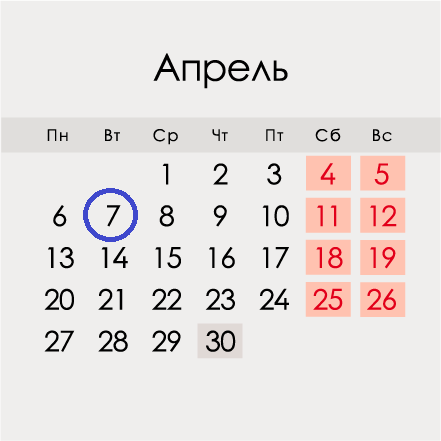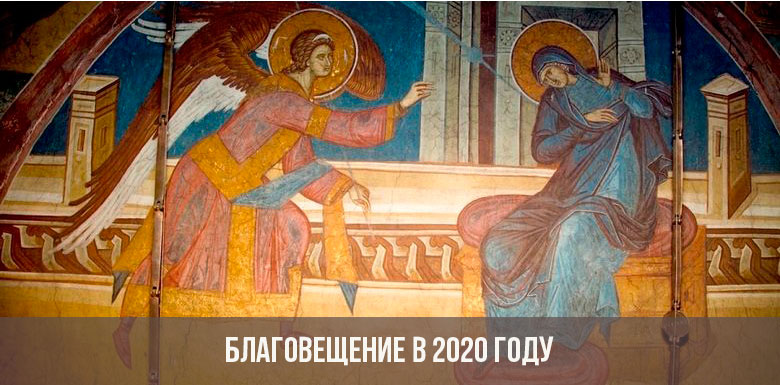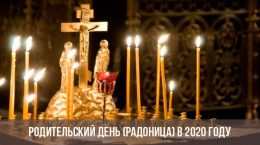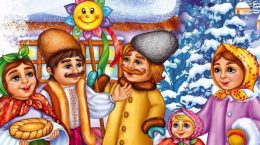Content [Hide]
The Annunciation is one of the twelfth holidays, included in the so-called cycle of the spring circle of the national calendar. For the Orthodox, this triumph means much more than for Catholics - it has historically been established that in the Slavic lands the Annunciation is celebrated much wider per day than in Western Europe. Therefore, the answer to the question of what date the Annunciation in 2020 is very important for us.
date
The Annunciation is closely connected with the Nativity of Christ. The holiday is established in honor of the appearance of the archangel of the Blessed Virgin Mary with the Good News - the news of the coming appearance of Christ. This means that it is necessary to count the date of the holiday from the date of Christmas.
The Annunciation is celebrated exactly nine months before the birth of Christ, which means it always falls on the same number - April 7th.
In 2020, the Annunciation is celebrated on Tuesday, April 7th.
Despite the fact that more and more people celebrate it from year to year, the celebration is not included in the number of official holidays and memorable days in Russia. It is exclusively a church and national holiday.

Event
From childhood, Mary was brought up at the Temple. Upon reaching adulthood, the girl was supposed to leave the temple and get married. The priest decided to pick her a pious husband. The twelve men he chose brought their staves to the priest and left them in the main hall for the night. The next morning, Joseph’s staff blossomed - so, according to legend, the Lord pointed to the future husband of the Virgin Mary.
In Joseph’s house in Jerusalem, Mary spun yarn to subsequently make it into the temple. At that moment, the archangel Gabriel appeared before Her, descending from heaven (according to one version, Gabriel appeared in the form of a dove, according to another - in the guise of an angel with wings; some theologians say that Mary only heard the voice of the archangel, but did not see him). Gabriel announced that Mary was destined to become the mother of the son of God.
“Rejoice, gracious!” - the words of the archangel sounded. According to the theologians, these words became the very first “goodness,” that is, good news for humanity after the expulsion of Adam. With this phrase, Gabriel not only reports the birth of Christ, but also says that soon people will receive the long-awaited forgiveness.
Folk traditions
Among the Eastern Slavs this celebration has several names - the Annunciation on the day, Zimobor (“winter and spring are fighting” or “spring has overcome winter”), the spell of spring, Great Day. The Annunciation is one of the four key seasonal holidays in the annual national calendar, symbolizes the beginning of spring, the turn of the year into heat, the starting point of a new life.
There are many traditions and rituals associated with the holiday - and all of them in one way or another have something in common with the meeting of spring, with the beginning of a new annual cycle. So, it is believed that on this day “all the reptiles of the earth” and “all birds of the forest” wake up - snakes, lizards, insects come out of the ground, where they hid with the onset of frost. Fish wakes up in lakes and rivers - “the ice breaks the pike”, buds open, and in some places the first flowers.

First day of the year
For many centuries, the Annunciation was considered the beginning of a new year - from this day the countdown of the new annual cycle began. And therefore, the traditions associated with the "first day" are many.
For example, the omens of “as you meet the year, so you spend it,” from here - they wanted to meet the Annunciation with everything new, clean, beautiful, with a rich table and no debts and debts.
Preparation for the celebration
Before the holiday, it was imperative to put the house and courtyard in order - to fix the broken during the winter, whiten the stove and walls, wash and clean every corner. It was imperative to get rid of the trash - old and unnecessary things, torn tattered clothes.
A few days before the celebration, the hostesses began to prepare refreshments - baked, salted, fried. It was necessary to remake as many household chores as possible in advance - all work except the most necessary was forbidden in the Annunciation.
On the eve they drowned the bathhouse - it was imperative to meet the holiday without fail, in a clean, preferably new shirt, in a festive, “red” dress.
Festive table
The main treat on the table is larks, small cookies (in some regions - buns) in the shape of birds. It was believed that the singing of a lark attracts spring, and spring will come soon to that yard where this little bird is. Birds were baked both ordinary, and sweet, and large, and small, they were laid out on the table and sat on a stick - and each child with a lark in his hands sought to "bark the spring", toss it up, show his little bird to the sun.

The spell of spring
Another custom echoes the theme of larks. In the early morning, before sunrise, the young women of the village went to meet the sun and call out spring. The caster chosen the day before carried a bird baked from unleavened dough. Climbing a hill or hillock on the outskirts of the village, with the first rays of the sun, the girl threw a lark as if to meet the sun - invoked warmth, called out spring. All the action was accompanied by ritual songs.
Read also:




















